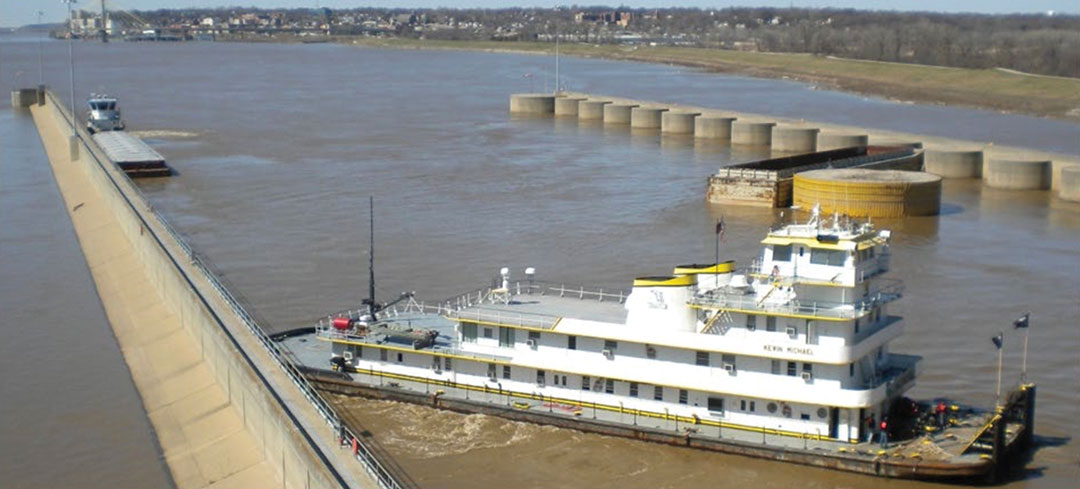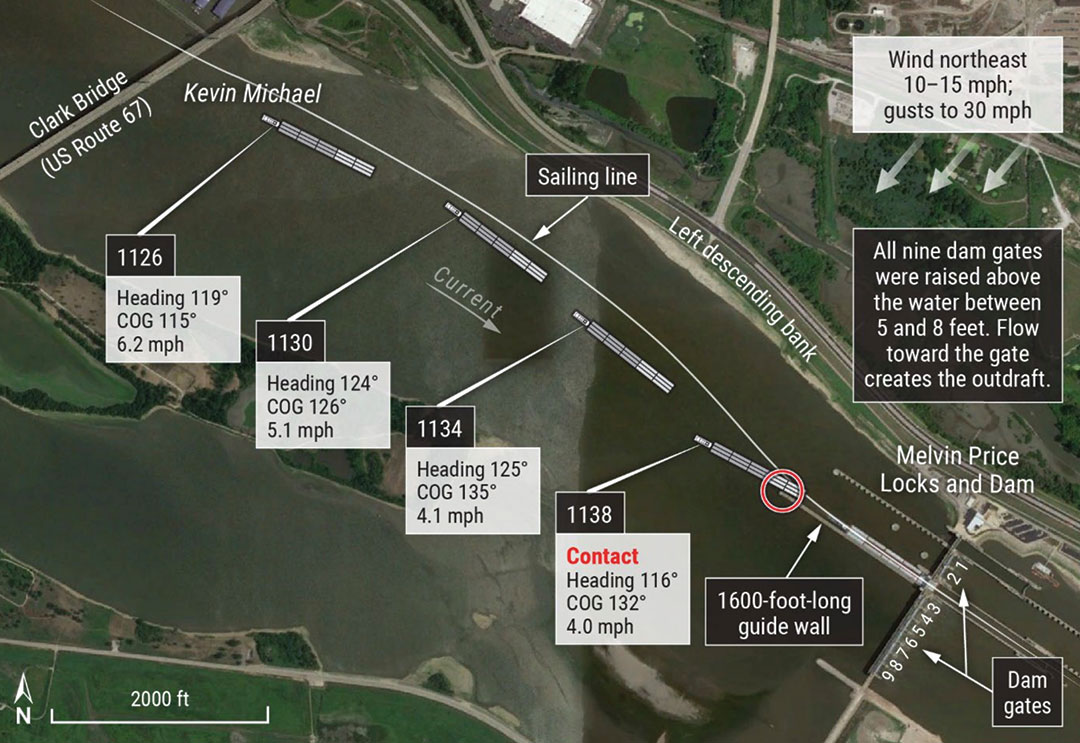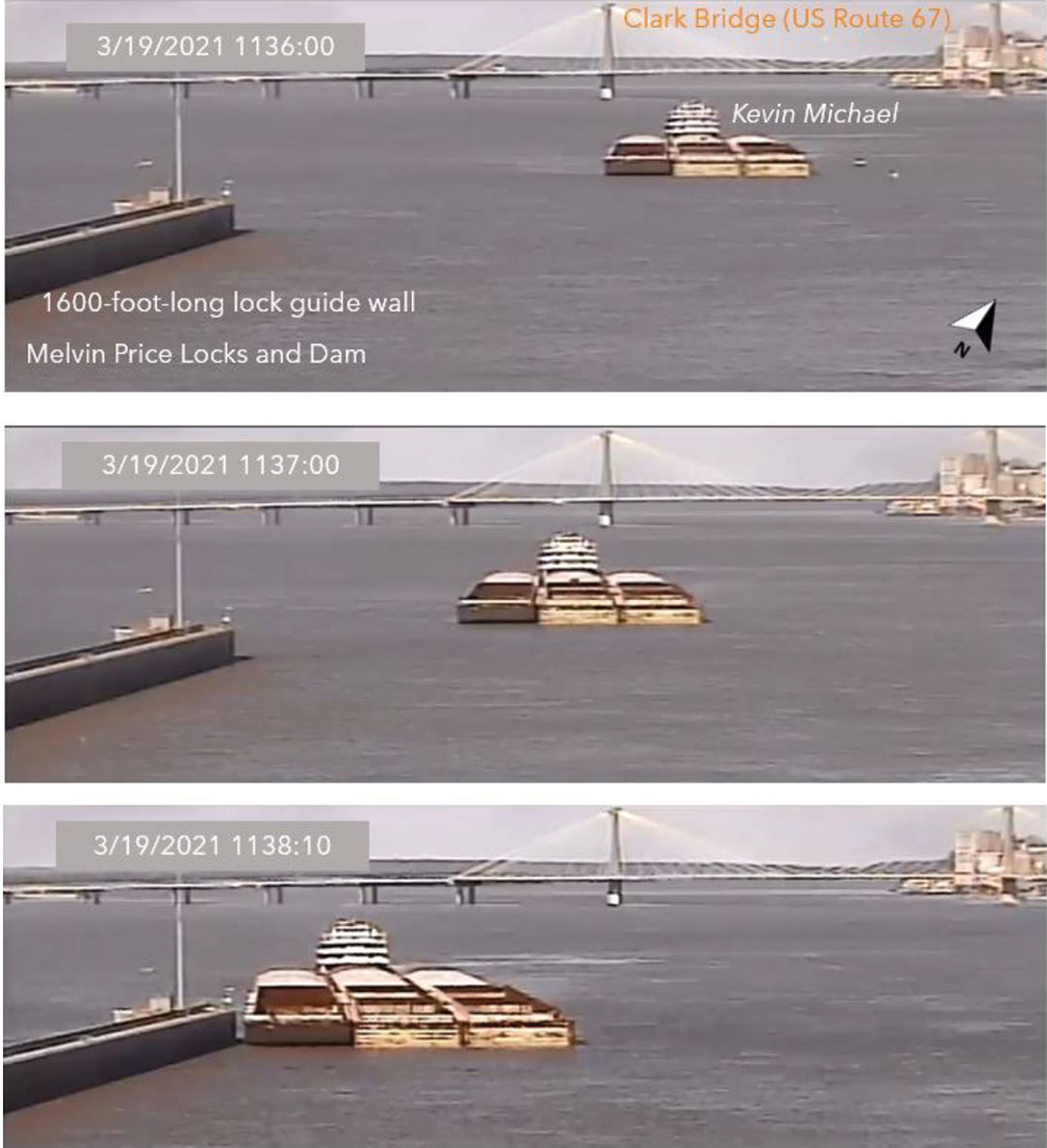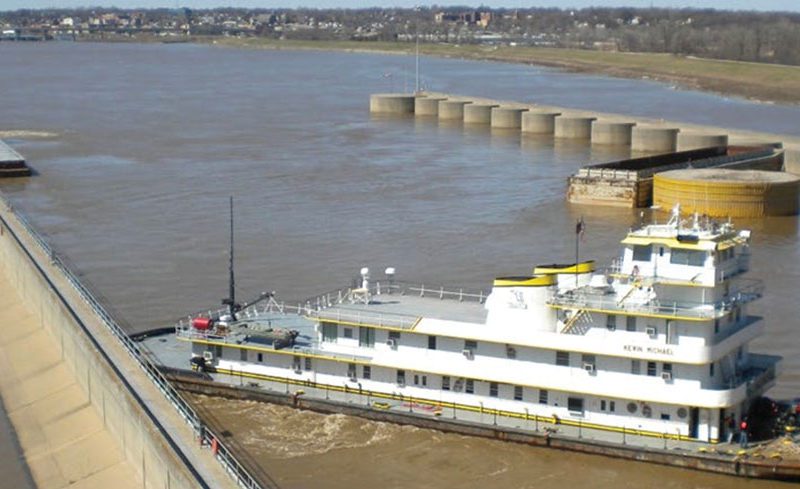
The pilot of a downbound tow that hit an Illinois lock wall during high water failed to compensate for gusty winds and a strong outdraft from the nearby dam, federal investigators said.
The 5,600-hp Kevin Michael was pushing 15 barges down the Upper Mississippi River when a barge on the starboard string struck the front of the Melvin Price Locks and Dam guide wall. The tow broke apart and seven barges drifted into the open dam gates.
No one was injured in the incident, which happened on March 19, 2021, at 1138 near Alton, Ill., at Upper Mississippi mile 201.
National Transportation Safety Board (NTSB) investigators determined the towboat’s path deviated from the sailing line authorities revised more than two years earlier to prevent such incidents.
“Although his course, which was based on experience and knowledge, was closer to the bank than the original sailing line, it was not as close to the bank as the revised sailing line,” the NTSB report said. “(That) left Kevin Michael’s pilot with less room to compensate for the strong outdraft and high winds as the tow approached the locks.”

Kevin Michael got underway from Hennepin, Ill., on March 17 with nine crewmembers on board. It was pushing six empty barges and nine loaded with corn or grain in a three-wide, five-deep configuration. The tow was 1,175 feet long, and the empty barges were positioned at the front of the tow.
Nearby river gauges measured 22.8 feet and rising on the morning of March 19 when the tow approached the Melvin Price Locks and Dam. That level is considered high water but not flood stage. Winds from the northeast gusted to more than 20 mph.
All nine of Melvin Price’s lock gates were fully open, and water passed through the structure at roughly 293,000 cubic feet per second. That volume of water was high compared to historic levels, and it created an outdraft that pushed tows toward the right descending bank, according to the report.

Authorities were aware of this challenging approach, and in 2018 there were 11 strikes at the Melvin Price Locks and Dam. In October 2018, the U.S. Army Corps of Engineers adjusted the sailing line on electronic navigation charts farther to the left bank to account for the strong currents.
That change was announced through a local notice to navigation interests and supplemented by a message sent using an email distribution list. However, the towboat’s operator, Hamm’s Frontier Marine of Chillicothe, Ill., was not on the distribution list. The pilot later told investigators he did not know the approach path had been modified, although it had been updated on the vessel’s electronic charts.
The pilot had transited through the Melvin Price Locks and Dam roughly 100 times. He was familiar with the strong set and planned his approach based on his past experiences to land the tow against the guide wall. He was aware of the currents and gusty winds and tried to account for both.
“Despite lining up in a position he felt would provide for a successful approach to the forebay, the tow slowly slid toward the center of the river and contacted the guide wall,” the NTSB said.
“(The) forces of the dam-induced outdraft and wind acting on the tow overcame the developed forces of the Kevin Michael’s engines and rudders from his orders, setting the tow to starboard and toward the center of the river before contacting the guide wall’s bull nose,” the report continued.
Eight barges drifted into the forebay for dam gates 1 and 2, which are separated from gates 3 through 9 by the main lock chamber. Seven barges drifted into gates 3 through 9. Nearby towboats removed the barges from the structure.
The main lock guide wall was scraped but structurally sound. Dam gates 4 and 5 sustained minor damage. The structure reopened to traffic the following day. Damage to the dam and affected barges reached almost $1.2 million.
Attempts to reach Hamm’s Frontier Marine for comment on the NTSB findings were not successful.

